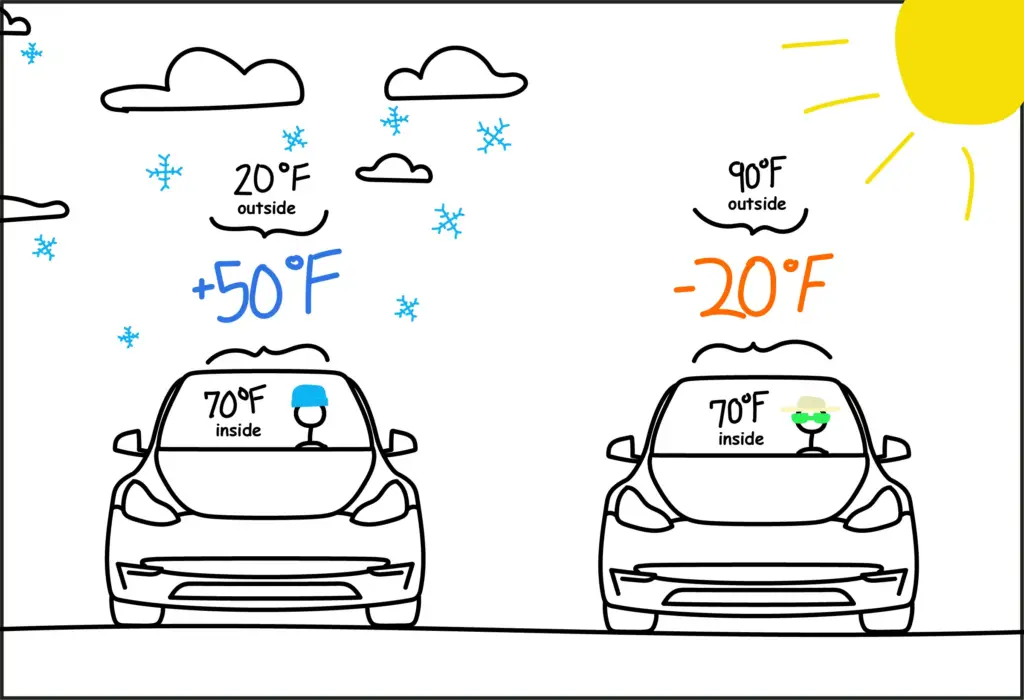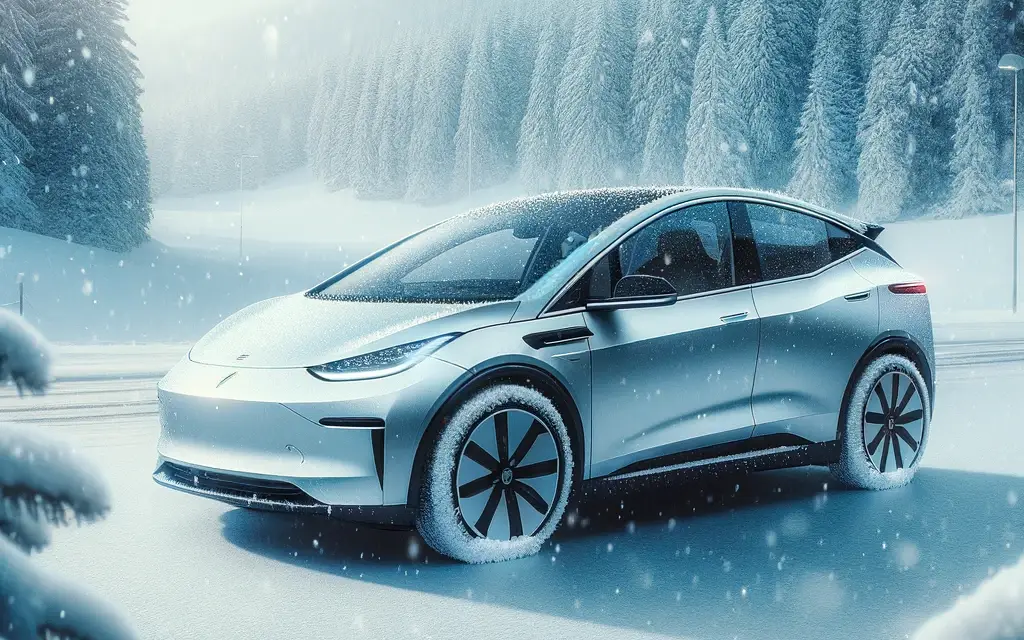As winter’s chill sets in, electric vehicle (EV) owners are faced with a distinct challenge: the reduced performance of their vehicle’s battery and the increased time it takes to recharge. These complications are not just minor inconveniences; they reflect the physical laws that govern the way energy storage and energy transfer operate at low temperatures.
In this comprehensive guide, we will explore why EV battery range drops in cold weather, provide insight into the underlying scientific principles, and offer practical tips to help EV owners maintain optimal performance in winter months.

The Science Behind Cold Weather Range Loss
When the temperature falls, the chemical processes within the EV’s battery—specifically, those that store and release electric energy—begin to slow. This means that, in colder conditions, less energy is available to power the car. According to data from the U.S. Department of Energy, the fuel economy of electric vehicles at 20°F can drop as much as 12% compared to a comfortable 75°F. Moreover, if drivers use the car’s interior heat, the range reduction can reach an alarming 41%.
This phenomenon is not exclusive to electric vehicles; traditional gasoline-powered cars face similar challenges in cold temperatures, albeit to a lesser extent. Fuel economy for gasoline vehicles at 20°F is roughly 15% lower than it would be at 77°F. This reduction becomes even more pronounced during short trips—where the temperature drop can account for as much as 24% loss in fuel efficiency. Even in the coldest parts of the U.S., many gasoline car owners use electric block heaters or battery pads to keep their engines warm and functioning properly during freezing conditions.

Despite these similarities, electric vehicles face greater hurdles due to the longer time it takes to recharge an EV compared to the mere minutes it takes to refuel a gasoline car. Understanding the specific challenges that EVs face in the cold is essential for owners looking to mitigate the effects of winter on their vehicles.
Why Do EVs Charge More Slowly in the Cold?
The reasons behind slower charging times in cold weather are rooted in the electrochemical processes that occur within EV batteries. The battery’s charging mechanism involves the movement of lithium ions from the cathode to the anode, and in frigid conditions, these ions do not flow as efficiently. As a result, the vehicle not only takes longer to charge, but it also suffers from diminished battery capacity overall.
Interestingly, an EV’s ideal operating temperature for charging lies between 68°F and 86°F, with variations depending on the model. When temperatures fall below this range, the electrochemical reactions in the battery slow down, requiring the vehicle to warm the battery before it can begin charging efficiently. This heating process uses both time and energy, leading to longer recharging periods.
Why Does Heating the EV Use So Much Energy?
Unlike gasoline-powered vehicles, which generate a significant amount of waste heat during operation, electric vehicles do not produce this by-product. In fact, about 89% of the energy in an EV is directly utilized to turn the wheels, leaving little to no extra heat for warming the cabin or battery.

This presents a challenge when the temperature drops. Unlike conventional cars that can rely on the excess heat from the engine, EVs must generate their own warmth, drawing precious energy from the battery. Thus, when an EV owner switches on the heater to keep warm during the cold months, the vehicle sacrifices energy that would otherwise be used for propulsion.
NASA’s Jet Propulsion Laboratory notes that only about 25% of the energy from a gallon of gasoline is used to power a vehicle, with the rest lost as heat. While this may seem inefficient, it does provide gasoline vehicles with an inherent advantage in cold weather. For EVs, however, the situation is quite different. To conserve energy and maintain comfort during the winter, EV owners are often advised to use seat heaters instead of cabin heaters, as they consume significantly less energy.
Maximizing EV Efficiency in Cold Weather
While colder temperatures pose challenges for EV range and charging efficiency, there are several practical strategies that can help mitigate the effects and ensure your electric vehicle performs optimally during winter months.

1. Opt for Heat Pump Technology
One of the most effective features in modern EVs designed to combat cold weather issues is heat pump technology. Heat pumps work by extracting cold air from outside, compressing it, and then using the heat generated by the condenser to warm the battery or the vehicle’s interior. This process is far more efficient than traditional resistance heaters, which rely heavily on battery power. By integrating heat pump technology, EVs can significantly improve range, especially during the colder months, and reduce the loss of energy due to inefficient heating methods.
2. Preheat the Battery
Many newer electric vehicles come equipped with an automatic battery preheating function. This feature helps prepare the battery for charging by warming it to an optimal temperature, ensuring that it charges quickly and efficiently. For those who charge their EVs at home, it’s advisable to plug in the vehicle as soon as possible when parking, even if you’re not immediately charging. Doing so keeps the battery warm and prevents it from cooling too much during the night.
Ford recommends that EV owners in colder climates leave their vehicles plugged in while parked for extended periods, as this will help maintain the battery’s temperature above freezing levels and improve both range and charging efficiency.
3. Park Indoors When Possible
To maintain the battery’s optimal temperature, it is beneficial to park the vehicle indoors during extremely cold conditions. Parking inside a garage or shelter can reduce the amount of energy required to warm the battery before driving. If indoor parking isn’t an option, consider using a car cover to protect the vehicle from harsh outdoor temperatures, keeping the battery warmer for longer.
4. Preheat the Cabin Before Driving
If possible, it’s helpful to preheat the cabin while the vehicle is still plugged in and charging. This not only warms up the interior but also prevents the need to draw power from the battery to heat the cabin once on the road. Studies have shown that using a heater at 20°F can lead to a 41% decrease in driving range. Therefore, warming the cabin before you start driving can significantly minimize this loss. If preheating isn’t feasible, consider using seat heaters, as they are far more energy-efficient than turning on the full cabin heater.
5. Ensure Proper Tire Pressure
Maintaining the correct tire pressure is crucial, especially in winter. Underinflated tires create increased rolling resistance, which means the vehicle must work harder to move, consuming more energy. Regularly check your tire pressure, and consult your vehicle’s owner’s manual for the recommended PSI levels to maximize energy efficiency and maintain the best possible range.
6. Activate Eco-Mode
Many modern EVs come with an eco-mode setting that helps conserve energy by adjusting the vehicle’s performance. By enabling eco-mode, drivers can reduce the amount of energy used for acceleration and other performance functions, which can help extend the range of the vehicle in cold weather. Although this mode may slightly reduce performance, it can be a wise trade-off for increasing the distance the car can travel.
7. Avoid Letting the Battery Drop Below 20%
Cold temperatures can significantly impact a battery’s ability to charge, particularly when it is nearing empty. When the battery drops below 20%, it not only has less stored energy but also requires additional power just to warm up enough to accept a charge. In extremely cold conditions, a near-empty battery may not charge at all, even if plugged in. Therefore, it is recommended to keep the battery above 20% to avoid these complications.
Conclusion: Embracing EVs in Winter
While the cold weather may present a series of challenges for electric vehicles, it’s important to recognize that EVs are adaptable and that proactive measures can go a long way in ensuring reliable performance. By understanding the science behind range loss in cold conditions and implementing practical strategies, EV owners can navigate the winter months with confidence and preserve the efficiency and longevity of their vehicles.
With the right knowledge and preparation, winter driving in an electric vehicle doesn’t have to mean sacrificing range, efficiency, or comfort.



